Rare Rides Icons: The History of Stutz, Stop and Go Fast (Part IV)

Stutz Motor Cars was subject to multiple successive changes in both fortune and direction early in its existence. Founded in 1911 based on racing success at the inaugural Indianapolis 500, by the middle of the decade Stutz had its IPO on the New York Stock Exchange. While the company’s sales increased, by the end of the decade it was without its founder and embroiled in a stock cornering scandal. Though it was delisted from the NYSE circa 1921, Stutz kept on selling the luxury cars for which it had become known. We pick up in 1926, as Stutz hit a sales high but was on the precipice of a big tumble.
It was an important product year for Stutz, as 1926 heralded the arrival of the new Vertical Eight cars. In addition to the more affordable Model Six cars, the Vertical Eights were a nod to the ever-increasing importance of cylinder count in luxury cars. Stutz saw 5,000 sales that year, and customers were pleased with the high performance of the 92-horsepower, 4.7-liter straight eight and the modern appearance of its various body styles.
Stutz cited in its marketing that the Vertical Eight cars had top speeds of over 100 miles per hour. For comparison, the very expensive 1926 Duesenberg Model A topped out at a paltry 82 miles per hour. The Bearcat was not amongst the company’s offerings after 1923, where it had a last showing as a rebranding on the standard Roadster. Stutz vehicles at the time were also considered “safety cars,” as company president Frederick Moskowics believed automobile safety was the way of the future. In 1926 the new cars were marketed as “The New Improved Safety Stutz.”
The new Stutz bodies were high quality and designed and built by highline coachbuilder Brewster & Company. Brewster started out in 1810 and quickly founded a reputation for building the best quality carriages in America. The company moved into car bodies in 1905 and even contracted with Rolls-Royce to build its American market models a few years later. The company’s luxury coachwork business was killed almost entirely by the Great Depression, and Brewster entered bankruptcy by 1935.
Though it no longer offered the high-performance racer for the road Bearcat, Stutz continued its focus on public spectacles of performance. In 1927 Stutz set a world record for speed over a 24-hour period, where one of its cars managed an average of 68 miles per hour. It also won the AAA Championship race series that year, taking home pole position in every single race, and each of the Stutz cars entered crossed the finish line. Other people were doing impressive racing things with Stutz cars as well.
The following year, famous pilot and inventor of fabric car bodies Charles Weymann (1889-1976) entered a 4.9-liter Vertical Eight Stutz in the 24 Hours of Le Mans. His two drivers finished second place in the race, to a 4.5-liter Bentley. It was an important achievement that an American car could run at a race dominated by the likes of Bugatti, Bentley, and Alfa Romeo. The Stutz held the highest place reached by an American car at Le Mans until 1966 when Bruce McLaren and Chris Amon took first place with the Ford GT40.
Weymann wasn’t finished with Stutz and Le Mans, however, and he had another go in 1929. He entered three cars with fabric bodies designed by Gordon Buehring and built at Weymann’s U.S. factory. The engine that time was a 5.3-liter version of the Vertical Eight engine, with a supercharger. The lightweight Stutz-powered racers didn’t fare as well though, and only one car placed (in fifth). The other two ruptured their fuel tanks and didn’t cross the finish line. We’ll talk more about Weymann next time.
Also in 1928, race driver Frank Lockhart (1903-1928) fused two supercharged 1.5-liter Miller engines in a modified Stutz Black Hawk Special Streamliner, a purpose-built land-speed record car. With the support of Stutz corporate, Lockhart’s newly engineered engine was a 3.0-liter mill of 380 horsepower.
The car was built to attempt a new land speed record at Daytona Beach in April of 1928. Lockhart’s first official speed was 203.45 miles per hour, which was under the current record set by the 81-liter Triplex Special earlier that year. Ready to try again, Lockhart did a return pass. Unfortunately, the Black Hawk’s rear tire exploded because of a blister that formed during the first run of the day. The Stutz dug its tire into the sand, went out of control, and rolled many times. Lockhart was thrown from the car and killed instantly.
Undeterred from the pursuit of top speed records, Stutz sent a production car out at Daytona as well. Driven by Gil Andersen (1879-1930), the production car runs proceeded without issue. Stutz broke the production car speed record, as their Vertical Eight reached 106.5 miles per hour on the sand.
Elsewhere in the Stutz production lineup, the company introduced successive revisions of the Vertical Eight while it continued to market the more affordable Model Six cars. Vertical Eight moved in series production from the AA, to BB, then to M, MA, and MB. There was some overlap between series as revisions were made, though the car underneath remained mostly the same. But there was a problem with all the Vertical Eight cars, in that the brakes didn’t really work.
Part of the Moskowics safety innovations that debuted with the new Vertical Eight was a hydraulic braking system provided by Timken. The four-wheel braking system (though advanced) was not reliable, and as Vertical Eight cars aged the system became less stable, and had more temperamental qualities. Word got out quickly about the brakes, which was quite a concern given the heft and serious performance of a large luxury Stutz.
Stutz attempted to engineer its way out of the problem and made braking improvements over the successive couple of years. But the issue never went away, and the Stutz safety reputation was damaged alongside its sales prospects.
In 1928, as the Great Depression approached, Stutz made a couple of updates to its flagship Eight: It made it more powerful. Displacement on the I8 increased from 287 cubic inches to 298, and horsepower jumped from 92 to 115. Said increase in power coincided with a new long-wheelbase model, as Stutz attempted to appeal to a broader customer group that included patrons of the custom coach-built car. LeBaron offered a town car body on the Stutz Vertical Eight chassis, at the shocking ask of $6,895 ($112,052 adj). in 1928. That’s more than double the ask of a Stutz a couple of years prior.
Though Stutz was successful at home and abroad with regard to performance, well-documented braking issues and ever-escalating prices were not a great combination as the United States approached the Great Depression. Sales figures for the time are not readily available, but the NYT did some reporting on Stutz finances. In 1925 Stutz had a net loss of $1,660,385 ($26,983,463 adj.), compared to a net loss of $517,567 ($8,411,151) in 1924. Sales in 1925 were $2,420,336 ($39,333,677 adj.), down from $2,347,887 ($38,156,285 adj.) in 1924.
But the financial doom was not to be anticipated, so Stutz went on losing money through the Twenties and even ventured into a new business in delivery vehicles in 1927. The company also invested in new body production technology. Next time we’ll talk fabrics, the Pack-Age-Car, and the Great Depression.
[Images: Stutz]

Interested in lots of cars and their various historical contexts. Started writing articles for TTAC in late 2016, when my first posts were QOTDs. From there I started a few new series like Rare Rides, Buy/Drive/Burn, Abandoned History, and most recently Rare Rides Icons. Operating from a home base in Cincinnati, Ohio, a relative auto journalist dead zone. Many of my articles are prompted by something I'll see on social media that sparks my interest and causes me to research. Finding articles and information from the early days of the internet and beyond that covers the little details lost to time: trim packages, color and wheel choices, interior fabrics. Beyond those, I'm fascinated by automotive industry experiments, both failures and successes. Lately I've taken an interest in AI, and generating "what if" type images for car models long dead. Reincarnating a modern Toyota Paseo, Lincoln Mark IX, or Isuzu Trooper through a text prompt is fun. Fun to post them on Twitter too, and watch people overreact. To that end, the social media I use most is Twitter, @CoreyLewis86. I also contribute pieces for Forbes Wheels and Forbes Home.
More by Corey Lewis
Latest Car Reviews
Read moreLatest Product Reviews
Read moreRecent Comments
- Tassos Great Choice, far better than an ES350. I prefer one size larger and a V8 as in the LS460, but it is probably not as agile as the GS.And thus spake the REAL TASSOS.
- Ajla "appealing to its customers"
- Cprescott Ah, Lexus before it became uncontrollably hideous looking. Those were the days!
- FreedMike Glad that one worked out for you!
- Urlik My issue with gigacasting is future repairabilty. It may save in manufacturing but all the savings will get eaten up by the consumers in increased insurance costs.



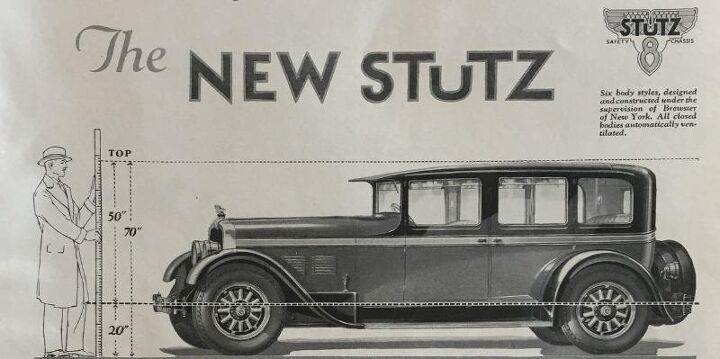



















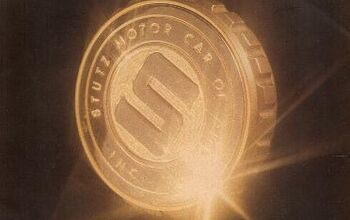
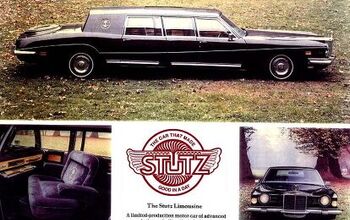

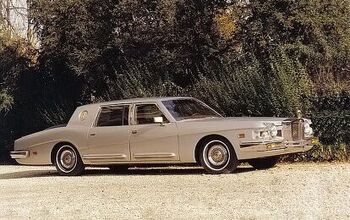
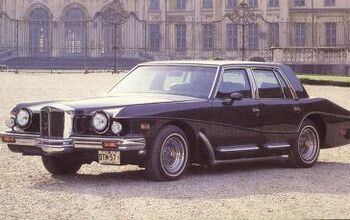










Comments
Join the conversation
Is it pedantic to say that never a blower Bentley won Le Mans? 1928 it was a natural aspirated 4.5. The blower BTW appeared 1929.
So...a hundred grand in today's money for a car with dicey brakes. No wonder sales divebombed.